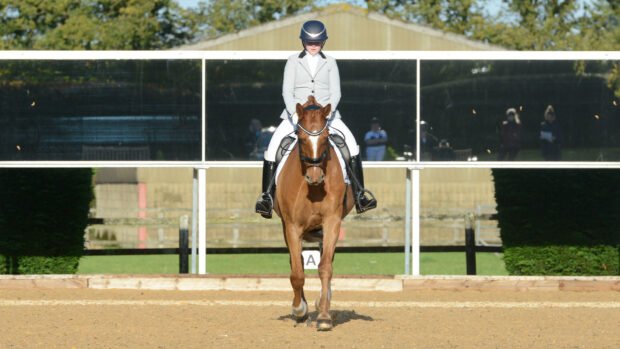If you ask any professional rider how they like their competition horses, “quite hot” will often be the reply.
They want their equines to have the power and the will to perform. Consequently, horses are being bred to be physically imposing with expressive movement.
This has resulted in a trend for anyone who wants to make it — whether at the prelim restricted regionals or Rio 2016 — to acquire a “hot” horse.
Even amateur riders are now convinced this is the way forward, until they realise they can’t go out and win a prix st georges (PSG) by the end of the season on their wunderbeast.
So how do you cope when you find yourself sitting on more than you bargained for? Top dressage rider Michael Eilberg shares his top tips:
- Be sure the horse is merely showing excess energy or power, rather than reacting to pain — have his back, teeth and tack checked first
- Talk to a dietician about keeping weight on and providing nutrients without building excessive energy
- Turn him out in a safe environment whenever possible
- If you ever feel out of your depth, enlist the help of an able professional
- Don’t be greedy — it’s better to take your time and not compete for three years than rush out and ruin your confidence and the horse’s
- Be patient — if you only walk in a session because he is too excited to trot and canter, that’s fine
- Give a goey horses plenty of walk breaks, but keep a contact and ride shapes to keep them thinking
- Make your aids black and white and the horse will learn quickly. If an animal knows how they should react to a command, they will be more relaxed about it
- A useful exercise is riding a square. The horse must come back to the rider to collect for the square’s corners. Give and retake the reins in the corners — you don’t want a hot horse powering round corners or cutting them
- To develop strength and confidence in canter, the horse needs to spend time lots of time cantering. Start on a small circle so as not to give the horse the opportunity to become too onward bound. Slowly make the circle bigger, giving and retaking the rein occasionally to establish you have control. Only then go large and, if the horse begins to take over, circle to regain control — don’t haul on the reins and potentially get into a fight
First published: 12 April 2013.
For all the latest news analysis, competition reports, interviews, features and much more, don’t miss Horse & Hound magazine, on sale every Thursday



